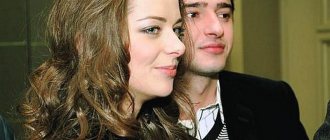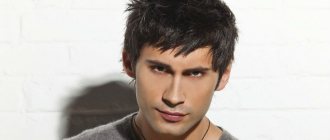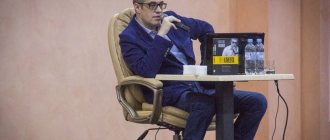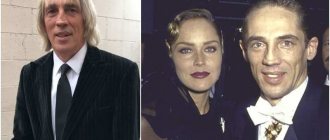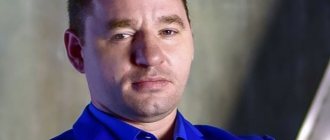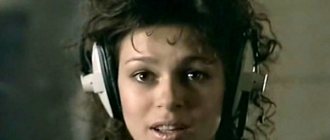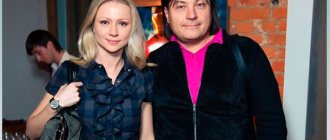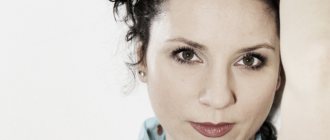Personal life
The biography of Shamil Malkanduev clarifies that now everything is fine with him and he has resumed his creative activity again: he is working on recording new albums, shooting videos, releasing songs, taking part in famous television show programs and performing in concerts.
One of the famous programs in which the singer took part is the project of the famous presenter Andrei Malakhov “Let them talk.” In it, Shamil Malkanduev shared some details from his personal life.
The artist told the public that he has been a Muslim since early childhood, observes all the traditions of this religion and reads the Koran. When a question was asked about what kind of women he likes, Shamil Malkanduev admitted to the presenter and the audience that he is bisexual. From this we can understand that he is frank not only to himself, but also to the public.
Biography and paintings of Oscar Rabin
Rabin Oskar Yakovlevich (1928 – 2018)
Oscar Yakovlevich Rabin is a Soviet and French nonconformist artist, one of the founders of the Lianozovo art group. He was subjected to serious criticism, as he was one of the prominent representatives of the Russian avant-garde. Knight of the Order of the Russian Academy of Arts “For Service to Art.”
From the age of thirteen, left an orphan, he was raised by the artist and poet Yevgeny Kropivnitsky, who was his first teacher and introduced him to the works of artists of the Russian and Western avant-garde of the early 20th century. He studied at the Academy of Arts in Riga and at the Moscow Art Institute named after V.I. Surikov, from where he was expelled “for formalism.”
He was one of the organizers of the notorious “bulldozer exhibition” of 1974, when an unauthorized exhibition of nonconformist artists in Moscow was dispersed with the help of bulldozers and watering machines.
Among the artist’s most famous works: “Trash No. 8” (1958), “Passport” (1964), “Still Life with Herring and Onions” (1965), “Ruble” (1966), “Untruth” (1975).
Oscar Rabin. Passport.
Oscar Rabin was born on January 2, 1928 in Moscow into a family of doctors, graduates of the University of Zurich, Yakov Rakhmilovich Rabin and Veronika Martynovna Anderman. When the boy was five years old, his father died, and at the age of thirteen he lost his mother.
From the beginning of the forties, Rabin began to live in Trubnikovsky Lane. After graduating from school, in the fall of 1942 he entered the art studio of Yevgeny Kropivnitsky in the House of Pioneers and became interested in romanticism. In 1944, after the liberation of Latvia, Oscar moved to his mother's relatives for some time.
From 1946 to 1948 Rabin studied at the Academy of Arts in Riga. In 1948 he moved to Moscow, where he was immediately accepted into the second year of the Moscow State Art Institute named after Surikov, but he studied there for only four months , and, not having secured a hostel, he went to work. In 1950 he married the artist Valentina Kropivnitskaya , the daughter of his first teacher Evgeniy Kropivnitsky, they had a daughter Katya, and two years later a son Alexander.
Until 1957, Rabin worked as a loader on the railway, and later as a foreman on the construction of a section of the Moscow Sevvodstroy water pipeline, located near the Lianozovo . The schedule was flexible, every other day, so Rabin had a lot of free time to paint. Sometimes this brought additional income - local residents knew the artist well and sometimes ordered copies of works by Russian classics.
Oscar Rabin. Not true.
In the late 50s, he was one of the founders of the Lianozovo group - an informal and not recognized by the authorities association of post-avant-garde artists who gathered in a barracks near the Lianozovo station. Among the members of the group were artists Lydia Masterkova, Vladimir Nemukhin, Evgeny Kropivnitsky and his son Lev Kropivnitsky .
In the spring of 1957, Oscar Rabin took part in the III exhibition of works by young artists of Moscow and the Moscow region, where two of his works participated. Also in 1957, he was a participant in the VI World Festival of Youth and Students, where he met the artists Oleg Prokofiev and Oleg Tselkov and became a laureate of the competition for the still life presented at the exhibition. His works - like the works of other members of the Lianozov group - were actively bought by Western collectors.
Rabin received the opportunity to officially earn money by painting and received a position as a graphic designer at a decorative and applied arts plant. And every Sunday, public exhibitions were held in his apartment, attended by foreign diplomats, journalists, as well as Soviet collectors, connoisseurs of the avant-garde and nonconformism.
Oscar Rabin. Icon, vodka and democratic caviar.
Since the early 1960s, criticism of Rabin and his like-minded people began, devastating reviews appeared in newspapers, and the authorities began to seriously restrict the freedom of expression of representatives of unofficial art. At the end of the 60s, it was forbidden to hold any exhibitions without the sanction of the Moscow branch of the Union of Artists.
In the spring of 1974, Rabin was the initiator and one of the main organizers of an exhibition of works by nonconformist artists on a vacant lot in Belyaevo , a Moscow district of new buildings. The exhibition lasted for about half an hour, then about a hundred policemen dressed in civilian clothes arrived at the scene. The action was suppressed with the involvement of several bulldozers, dump trucks, and watering machines. Pictures were broken, participants were detained, some were beaten.
The event caused a huge resonance in the press: Western journalists and diplomats were present. The exhibition became widely known as the “bulldozer” exhibition and was one of the important acts of resistance of the creative intelligentsia to the authorities. Rabin's works were not taken to exhibitions, and he was not accepted into the Union of Artists.
Oscar Rabin. Emigrant still life.
In 1978, Rabin and his wife emigrated to France , and in June of the same year, the Presidium of the Supreme Soviet of the USSR, by a special resolution, deprived the artist of Soviet citizenship. At the same time, he was very famous in the West; his first personal exhibitions were held in the mid-60s in London. After emigrating, he began to exhibit in France, the USA and other countries.
In 1985, Rabin received French citizenship, and five years later, in 1990, he received news that he had the right to restore Soviet citizenship, but the artist had no intention of returning to his homeland. After the collapse of the USSR, the artist’s work was finally rehabilitated.
In 2006, Rabin received a Russian passport, and in 2008 he had his first and last solo exhibition at the Tretyakov Gallery . In 2013, Rabin was awarded the Order of the Russian Academy of Arts “For Service to Art .
Oscar Yakovlevich Rabin died in Florence, where preparations were underway for his next exhibition “Two Paths,” on November 7, 2020, after undergoing surgery.
Oscar Rabin. Parisian landscape.
Over 60 years of active creativity, Oscar Rabin created about 1,500 works . In the last years of his life, he lived and worked in France and, already abroad, became one of the best-selling artists of the Soviet period. His works regularly appeared at major exhibitions, their prices reached three hundred thousand dollars and in the last fifteen years they have become more expensive every year, so that among collectors they began to say that purchasing Rabin’s works is the most profitable investment.
Currently, his works are in such large museums as the State Tretyakov Gallery in Moscow, the State Russian Museum in St. Petersburg, the State Center for Contemporary Art in Moscow, the Moscow Museum of Modern Art and other museum collections and private collections.
Oscar Rabin. HOORAY!
You can view all the artist’s works presented in the Vellum gallery using this link.
